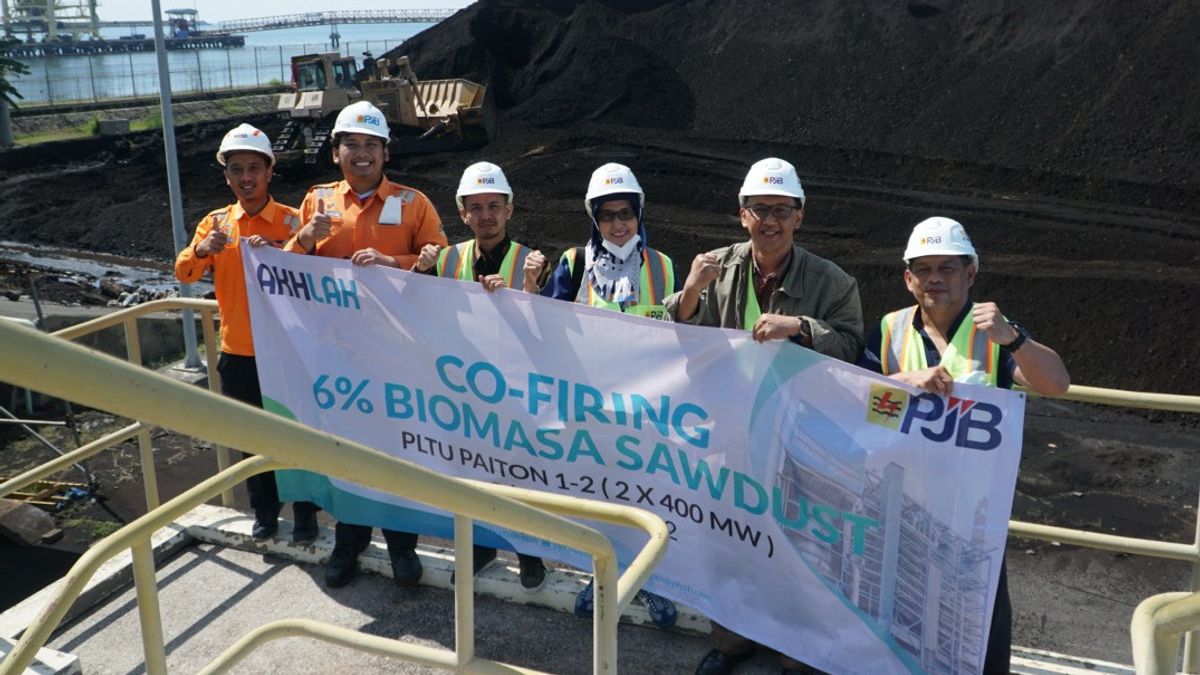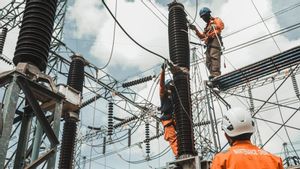JAKARTA - PT PLN (Persero) through its subsidiary PT Pembangkitan Jawa Bali (PJB) has successfully implemented the use of 6 percent biomass for fuel for the Paiton Steam Power Plant (PLTU) units 1 and 2.
This success will be one of the showcases during the G20 Summit, which will also show PLN's role in guarding the transition to sustainable green energy.
PLN President Director Darmawan Prasodjo explained that by increasing the portion of biomass in PLTU, it could further suppress the need for coal. Moreover, PLTU Paiton units 1 and 2 are Bali's electricity backbone that supplies electricity needs during the G20 Summit which will be held next November.
"With the percentage higher than the previous 5 percent to 6 percent, Alhamdulillah all equipment is operating normally and SO2, NOx emissions are in good condition below the maximum value set by the Ministry of Environment and Forestry," Darmawan said to the media, quoted Tuesday, July 12. .
The trial of increasing the share of biomass from 5 percent to 6 percent at PLTU Paiton units 1 and 2 was carried out on 5 and 8 July 2022 and in the near future it will be continued with a larger percentage.
He hopes that the trial of increasing the co-firing portion can be continued by increasing the biomass portion, which was previously carried out by testing palm shell samples as biomass for the application of co-firing.
"Furthermore, in the near future, high co-firing ratio tests will be carried out for PLTU Paiton units 1 and 2 to 30 percent biomass. Biomass also includes carbon neutral, which has lower sulfur content, lower ash content, thereby reducing SOx emissions and is more environmentally friendly. environment," he added.
Darmawan explained that biomass which will replace coal has the advantage of a more optimal combustion than coal, besides that the ash content from combustion is more environmentally friendly and does not affect the cost of electricity supply (BPP).
SEE ALSO:
Darmawan explained that apart from PLTU Paiton units 1 and 2, PJB has also conducted trials to increase biomass at PLTU Tembilahan to 100 percent co-firing of palm shell biomass in stages from 25, 50, 75 to 100 percent.
"Within 4 days, with general results, the maximum power achieved is still within normal limits," said Darmawan.
As of June 2022, PT PJB has produced 114,065.87 MWh of green energy from co-firing. Not only that, PJB has also succeeded in reducing CO2 by 176.111.76 metric tons of CO2 equivalent avoided. Especially for PLTU Paiton 1-2 managed to reduce CO2 by 70,626.54 metric tons of CO2.
PLN is optimistic that the increase in the co-firing portion at PLTU Paiton Units 1 and 2 will run smoothly. Through trials, increasing the percentage of biomass in a period of 16 hours requires as much as 240 tons of sawdust per hour. The increase in the share of biomass to 6 percent at PLTU Paiton units 1 and 2 increases the supply of electricity from new and renewable energy (EBT) by 48 megawatts (MW).
The English, Chinese, Japanese, Arabic, and French versions are automatically generated by the AI. So there may still be inaccuracies in translating, please always see Indonesian as our main language. (system supported by DigitalSiber.id)
















